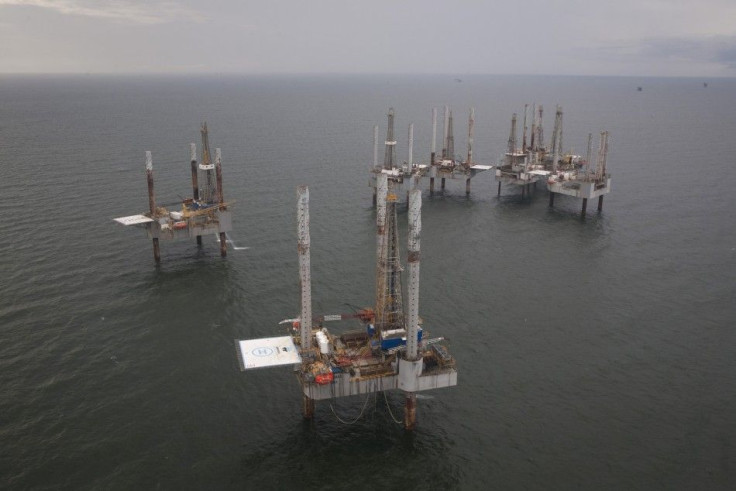Gulf Coast Oil Industry's Recovery Difficult to Grasp

Stymied by a six-month drilling moratorium, the climb to recovery appears slow for the oil and natural gas industries in the Gulf of Mexico since the Macondo spill of 2010.
In reality, it's a little more ambiguous than public perception or data numbers suggest.
Of the 56 drilling rigs in operation in deep water regions of the Gulf before BP Plc's spill, 36 are back online as of Nov. 18 and are actively drilling new wells for hydrocarbons, according to analysts with Baker Hughes. Twenty rigs have decided to leave the region altogether.
The U.S. Energy Information Administration, whose latest available data dates back to Feb. 3, shows offshore rig counts have progressively dropped throughout the country since 1981. That December, there were 283 offshore oil and natural gas rigs in operation. That number plummeted to 15 operating rigs in July of last year. As of September, there were 32 operating rigs.
Since then, rig numbers have appeared to stay flat. When the Gulf Coast moratorium was lifted last year on Oct. 12, the Bureau of Safety and Environmental Enforcement's website, which updates the number of approved drilling permits in the Gulf on a daily basis, shows the number of approved unique deepwater wells totaled 56 as of Nov. 29.
The drop in rig counts since the 1980s, especially in the Gulf region, said Jonathan Cogan, a spokesman for the Energy Information Administration, is partly due to the drop in oil prices experienced at that time, and an increasingly pronounced interest in ultra deep-water prospecting. As technology improved to do so, the size of the rigs increased and so did their reach. Added reach meant rigs could dig deeper in the ground and harvest oil from a larger area - thus rig counts started dropping off.
But this is where it gets complicated.
David Smith, a spokesman with the Bureau of Safety and Environmental Enforcement, said comparing the difference between permit and rig numbers pre spill to those post spill will not be an accurate indication of the industry's revival or decline in the Gulf region.
As part of the new permitting regulations put in place after the Macondo spill, rigs get counted and labeled differently. Where a rig drilling at 1,000 feet was considered a deep-water well before, now its considered at 500 feet. Distinctions are also made for wells that require blowout protectors and those that don't.
Smith said the environmental enforcement bureau is actively working to devise a system of comparison, which should come out in the next few days.
It's comparing oranges to apples, and Andy Radford, senior policy advisor for offshore with the American Petroleum Institute, said to get a real sense of the industry's health, one needs to take a closer look.
I guess you have to look behind the curtain and look at what they are doing, Radford said, who added just because a permit allows for drilling, doesn't mean they are specifically drilling for oil or natural gas.
But the reason why rig counts aren't climbing back up post moratorium, reported the Financial Times on Nov. 13, is in part due to the drilling permitting process, which has became more stringent.
The Times reported that the 3,654 pages of paperwork and a wait of more than 100 days before a drilling permit is issued have contributed to more than 1 million barrel of oil equivalents lost this year compared to last.
The increased permitting demands have dampened people's confidence in the region's industry, according to Andy Radford, senior policy adviser for offshore with the American Petroleum Institute.
Though the permitting process is slowly getting better and faster, companies are almost having to do a cost benefit analysis when seeking drilling permits, segregating the wells for which they are certain to get approval while leaving others untapped, said Radford.
It is common for a company to have to wait 200 days between filing a plan for a well and the time the permit is finally approved, and the current permitting process is causing some companies to lose confidence in the industry, added Radford. Some want the permitting process to go faster to help promote growth, he said.
That could be costly come Dec. 14, when the Department of the Interior opens up more than 21 million acres of Gulf offshore oil leases.
At the heart of the issue is whether the Bureau of Safety and Environmental Enforcement can keep up with incoming permits, and after the moratorium, this sale is likely to be a platform for the industry to expel some of its pent up demand, Radford said.
That increases uncertainty, he said. To make investment decisions, [companies] like certainty and predictability.
John Filostrat, public affairs officer for BOEM's Gulf of Mexico Region, said the regions up for sale contain anywhere between 222 to 423 million barrels of oil that can generate an estimated revenue of $5.7 to $9.6 billion.
For BOEM, this sale, though the first since the Macondo spill, is routine and just getting back to normal business, Filostat said.
© Copyright IBTimes 2024. All rights reserved.





















